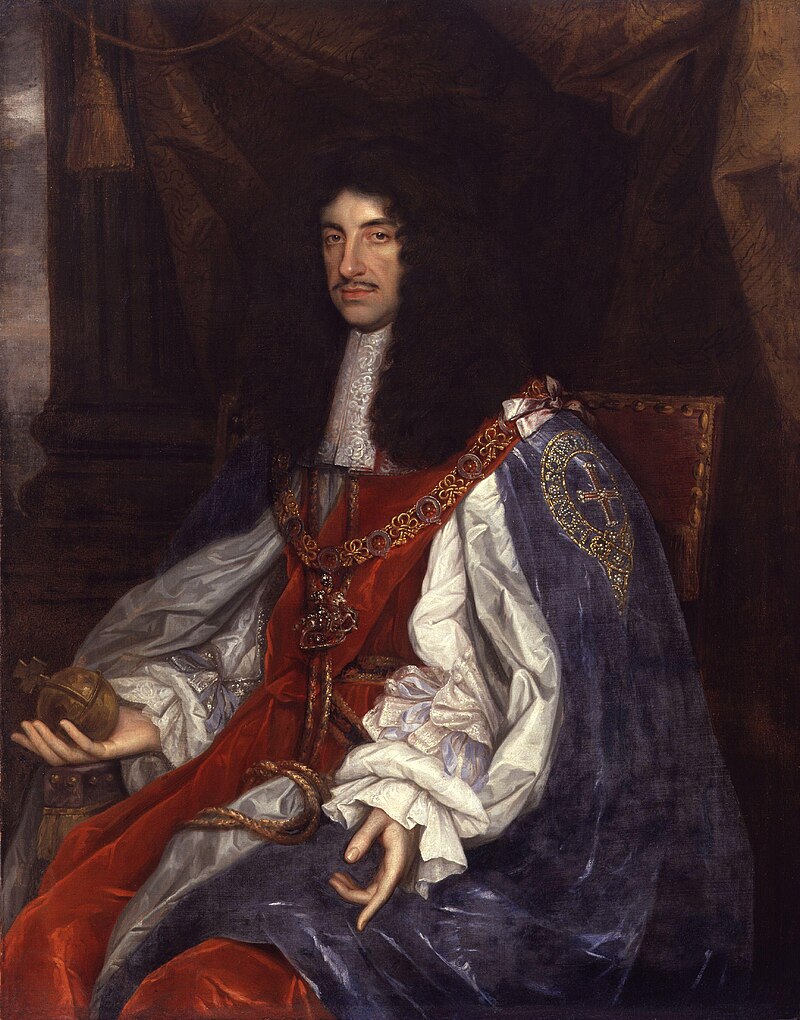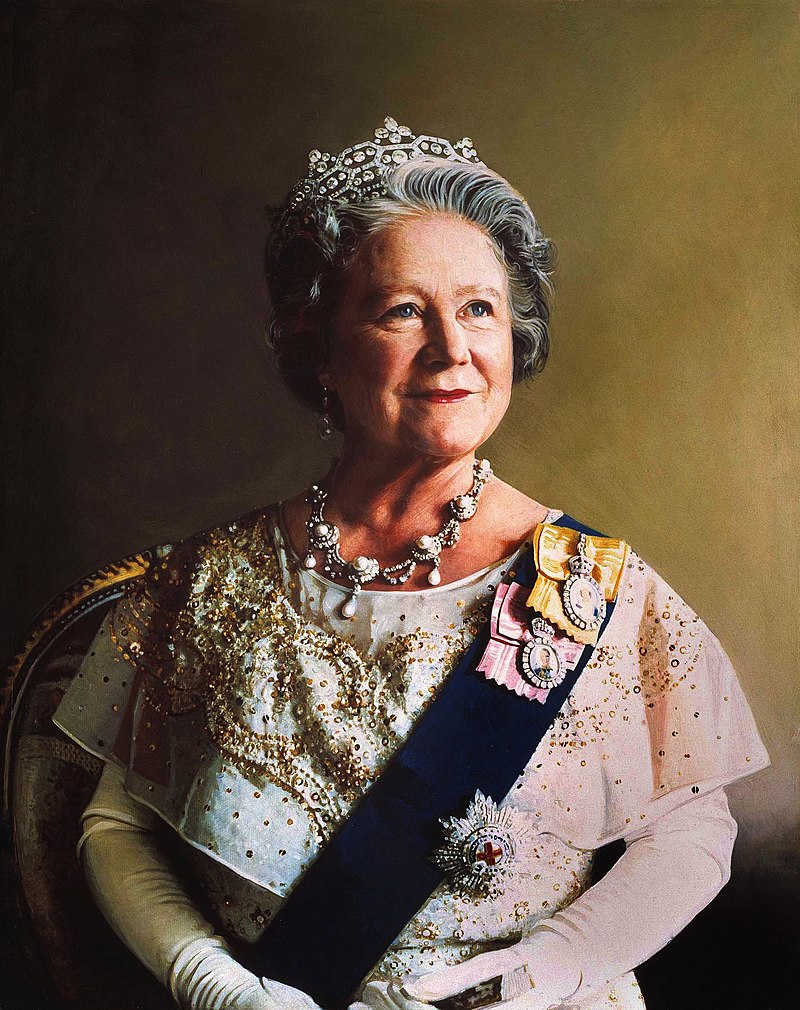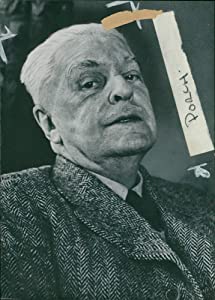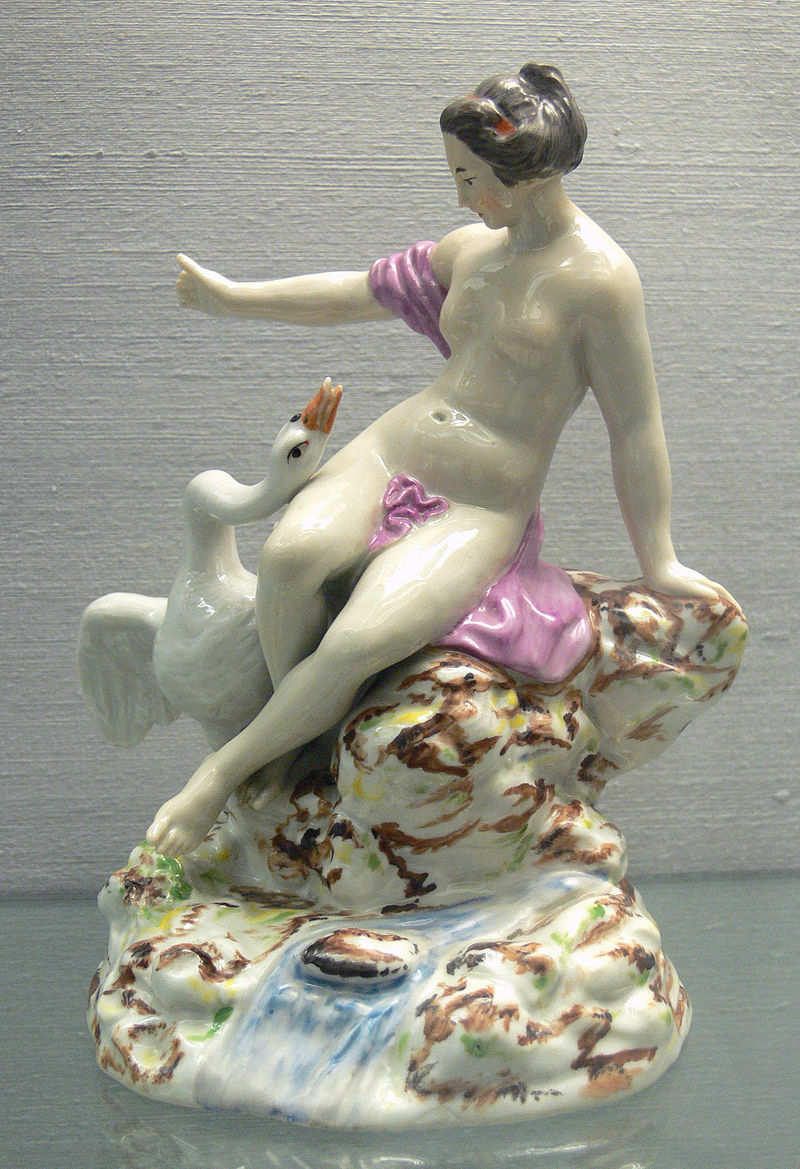by Susan Flantzer
© Unofficial Royalty 2020

Nell Gwyn; Credit – Wikipedia
Nell Gwyn’s beginnings are uncertain. Generally, her birth is given as February 2, 1650. A horoscope done for Nell Gwyn by antiquarian and astrologer Elias Ashmole at the Bodleian Library at the University of Oxford bears that date. Three cities claim to be Nell’s birthplace: Hereford, London, and Oxford in England. Thomas Gwyn, an army captain who died or disappeared, is thought to be Nell’s father. Nell’s mother was born Helena Smith, known as Madam Gwyn, in the civil parish of St Martin-in-the-Fields in London, England, and lived there all her life. Nell had an older sister Rose and the two girls were brought up in one of the streets off Drury Lane, on the eastern boundary of the Covent Garden area of London. At that time, the area of Drury Lane was almost exclusively brothels and pubs and was considered the center of London prostitution. Nell’s mother worked as a tapwoman at the Rose Tavern on Russell Street and it can be assumed that she also worked as a prostitute and that Nell probably worked as a child prostitute.
When King Charles II was restored to the English throne in 1660 after ten years of protectorate rule by Oliver Cromwell and his son Richard Cromwell, he quickly reinstated the theater that the Cromwells had banned. In 1663, the King’s Company, led by Thomas Killigrew, opened a new playhouse, the Theatre in Bridges Street, which was later rebuilt and renamed the Theatre Royal, Drury Lane. Mary Meggs, a former prostitute nicknamed “Orange Moll” and a friend of Madam Gwyn’s, was granted a license to sell fruit and sweetmeats within the theater. Orange Moll hired Nell and her older sister Rose as scantily clad “orange-girls” to sell her wares to the audience inside the theater. The orange-girls were exposed to aspects of theater life and London’s higher society. The actors at the theater were the King’s Company and King Charles II frequently attended performances. The orange-girls also served as messengers between men in the audience and actresses backstage. They received monetary tips for this role and some of these messages would end in sexual assignations.
Previously in England, women’s roles had been played by boys or men. The new theatres were the first in England to feature actresses. Less than a year after becoming an orange-girl, fourteen-year-old Nell became an actress with the King’s Company. Nell could not read or write and had to learn her lines by having them read to her. Charles Hart, one of the fine male actors of the time, taught her the basics of acting, and John Lacy, a comic actor, and playwright, taught her dancing. Nell became the mistress of both John Lacy and Charles Hart.
Nell first appeared in smaller parts during the 1664–65 season but by 1665, she had become a more prominent actress. She was first mentioned in Samuel Pepys‘ famous diary on Monday, April 3, 1665, when Pepys had attended a play and mentioned “pretty, witty Nell”. This unusual use of only her first name would imply that Nell had made herself known both on the stage and off. Her first recorded appearance on-stage was in March 1665, in John Dryden‘s heroic drama The Indian Emperor, playing opposite Charles Hart. However, it was in the new form of restoration comedy that Nell would become a star. In May 1665, she appeared opposite Charles Hart in James Howard’s comedy All Mistaken, or the Mad Couple. This was the first of many appearances in which Nell Gwyn and Charles Hart played the “gay couple”, a pair of witty, antagonistic lovers, the man generally a rake fearing marriage and the woman pretending to do the same to keep her lover at arm’s length.

King Charles II of England; Credit – Wikipedia
The affair between Nell and King Charles II began in April 1668 when Nell was attending a performance at Lincoln’s Inn Fields Theater. Charles II was in the next box and was more interested in flirting with Nell than watching the play. Charles II invited Nell and her escort to supper, along with his brother the Duke of York. After supper, so the story goes, Charles II discovered that he had no money on him and neither did his brother, resulting in Nell having to cover the cost of the supper. “Od’s fish!” she exclaimed, in imitation of Charles II’s manner of speaking, “but this is the poorest company I ever was in!”
Between September 1668 and the spring of 1669, Charles II and Nell spent much time together. Nell would joke with Charles II, that he was “my Charles the Third”, referring to two former lovers named Charles. When Charles’ sister Henrietta Anne, Duchess of Orléans, came to England on a visit in 1670, she met Nell and gave her gifts. Shortly afterward Louise de Kérouaille, one of Henrietta Anne’s ladies-in-waiting also became a mistress of Charles II, however, Nell did not show any signs of jealousy. Unlike Barbara Palmer or Louise de Kérouaille, Nell did not insist on an apartment in the Palace of Whitehall either.

Charles Beauclerk, 1st Duke of St Albans, son of King Charles II and Nell Gwyn, circa 1690; Credit – Wikipedia
Nell had two children with King Charles II:
- Charles Beauclerk, 1st Duke of St Albans (1670 – 1726), married Lady Diana de Vere, had 12 children, the descendants of Nell Gwynn and King Charles II have continued the line of the Dukes of St. Albans through the centuries
- Lord James Beauclerk (1671 – 1680), died young
Nell was famous for her wit and bawdiness. Some examples follow.
- Because of the general mistrust between England and France in the 17th century, Charles II’s French Catholic mistress Louise de Kérouaille was unpopular with the English people. Instead, most of the public adored the bawdy actress Nell Gwyn. One day, Nell was out for a carriage ride when she heard a crowd shouting at her about her supposed Catholic faith. Nell realized the crowd had mixed her up with Louise. She opened the carriage window and said, “Good people, you are mistaken. I am the Protestant whore.”
- When Charles II asked Nell to invite Anna Maria Talbot, Countess of Shrewsbury to a party which Nell gave in his honor, Nell is said to have replied: “One whore at a time should be enough for you, sir.”
- In public, Nell is said to have asked the king several times and very directly whether he would come to her in the evening or not, “I hope I shall have your company at night, shall I?” As might be expected, Nell never hoped in vain to see the king at night.
- Charles II was careful about inviting Nell to the Palace of Whitehall, and Nell never asked for such invitations. She had no desire to act like a lady she was not and that she preferred to meet Charles in her own house in a far more informal atmosphere. Louise de Kérouaille, in contrast, was of French noble descent and moved into apartments in Whitehall in 1671. Both women seldom met in Whitehall, however, Charles loved to arrange day trips and picnics with all his mistresses and children. On one of these occasions, Louise is said to have congratulated Nell on her social rise by saying she was as rich as a queen. Referring to Louise’s new title Duchess of Portsmouth after the birth of her first and only son with Charles, Nell is said to have responded, “You are right, madam. And I am whore enough to be a duchess. “
- When Louise de Kérouaille ‘s son Charles Lennox was made Duke of Richmond, Nell was upset. Her two sons had not yet been given titles and lands like Charles II’s other illegitimate sons. So when Charles II visited her in her house, Nell is said to have called to her son, “Come here, you little bastard, and say hello to your father!” When Charles reprimanded her not to insult the child with the label “bastard,” Nell replied, “Why, Sire, Your Majesty has given me no other name to call him by.” Soon thereafter, Nell’s firstborn son received the titles Duke of St. Albans, Earl of Burford, and Baron Headington.

Nell Gwyn, circa 1680; Credit – Wikipedia
Nell never received a title for “services to the king” or was showered with fortune and jewels like Barbara Palmer, Duchess of Cleveland or Louise de Kérouaille, Duchess of Portsmouth. Charles II did give her an annual pension of £2,000 and several houses where she was famous for giving dinner parties. Despite many offers, she never returned to the theater. Nell never dared meddle in Charles’ personal or political issues, as Louise and Barbara did. She knew such discussions would only cause trouble and avoided these topics.
In July 1679, Nell’s mother, a well-known alcoholic at the end of her life, died. During a night walk, she is said to have fallen into a stream, passed out, and drowned. Nell had supported her mother financially and arranged a lavish funeral for her mother and burial in St. Martin-in-the-Fields Church in London. When her youngest son Lord James Beauclerk died in Paris, France in 1680, Nell was very distressed and accused herself of being responsible for his death. She had sent him to Paris for upbringing and training for a year, accompanied by his tutor. James is said to have died of an “open leg,” likely an infected wound after an accident.
When Nell learned of King Charles II’s serious illness at the beginning of February 1685, she wanted to see him, but she was not admitted to his bedchamber. Charles’ brother James, who would succeed his brother as King James II, let her know that she was not a member of the royal family. After Charles’ death, Nell was forbidden to wear mourning clothes and was not allowed to attend his funeral. However, on his deathbed, Charles remembered Nell when he told his brother James to look after his mistresses: “let not poor Nelly starve.” King James II eventually paid most of Nell’s debts and gave her an annual pension of £1,500. He also paid off the mortgage on Nell’s home in Bestwood, Nottinghamshire which remained in the Beauclerk family until 1940.

St. Martin-in-the-Field-Church where Nell Gwyn is buried; Credit – By Robert Cutts – Flickr: St Martin in the Fields, CC BY 2.0, https://commons.wikimedia.org/w/index.php?curid=31207964
In March 1687, Nell suffered a stroke, probably due to the effects of syphilis, that left her paralyzed on one side. Two months later, a second stroke left her confined to her bed at her Pall Mall, London house. On November 14, 1687, Nell Gwyn, aged 37, died from another stroke. Her funeral took place on November 17, 1687, in a packed St Martin-in-the-Fields Church in London, where she was also buried, with many more mourners lining the streets outside the church. Fulfilling one of Nell’s last requests, Thomas Tenison, Archbishop of Canterbury, preached a sermon from the text of Luke 15:7 “Just so, I tell you, there will be more joy in heaven over one sinner who repents than over ninety-nine righteous persons who need no repentance.”
This article is the intellectual property of Unofficial Royalty and is NOT TO BE COPIED, EDITED, OR POSTED IN ANY FORM ON ANOTHER WEBSITE under any circumstances. It is permissible to use a link that directs to Unofficial Royalty.
Works Cited
- Beauclerk, Charles, 2005. Nell Gwyn: Mistress To A King. New York: Grove Press.
- De.wikipedia.org. 2020. Nell Gwyn. [online] Available at: <https://de.wikipedia.org/wiki/Nell_Gwyn> [Accessed 4 October 2020].
- En.wikipedia.org. 2020. Nell Gwyn. [online] Available at: <https://en.wikipedia.org/wiki/Nell_Gwyn> [Accessed 4 October 2020].
- Flantzer, Susan, 2016. King Charles II Of England. [online] Unofficial Royalty. Available at: <https://www.unofficialroyalty.com/king-charles-ii-of-england/> [Accessed 12 September 2020].
- Fraser, Antonia, 1979. King Charles II. London: Phoenix.
- Williamson, D., 1996. Brewer’s British Royalty. London: Cassell.







































